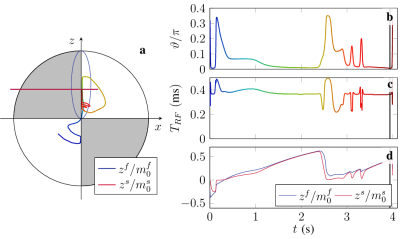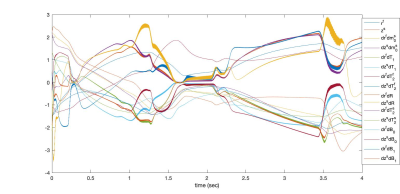Cem Gultekin1, Jakob Assländer2, and Carlos Fernandez-Granda3
1Mathematics, Courant Institute of Mathematical Science, New York, NY, United States, 2Radiology, New York University Grossman School of Medicine, New York, NY, United States, 3Mathematics and Data Science, Courant Institute of Mathematical Science and Center for Data Science New York University, New York, NY, United States
1Mathematics, Courant Institute of Mathematical Science, New York, NY, United States, 2Radiology, New York University Grossman School of Medicine, New York, NY, United States, 3Mathematics and Data Science, Courant Institute of Mathematical Science and Center for Data Science New York University, New York, NY, United States
We present an adaptive Petrov-Galerkin(PG) solver applicable to many MRI typical ordinary differential equations. We apply the technique to solve an optimization
problem for pulse design. Our method reduces the
time required to compute the gradients by three orders of magnitude.

Optimization result acquired with PG on
Hybrid-State model. Targeted relative CRB values after minimization
rCRB(m0s)=1.1 · 10^5, rCRB(T1)=2.0 · 104 and rCRB(T2f)=3.26 ·104.
Biophysical parameters included in the CRB computation are proton
density=1, m0s=0.1, T1=1.6 sec, T2f=65 msec, R=30, T2s=60 µsec, B0 and B1. Relative CRB is defined as rCRB(T1)=CRB(T1)Texp/TRT12

Hybrid-State equations solved by PG for cycle of 4 seconds. Each signal is normalized by its mean magnitude for visualization. The oscillations are aligned with RF pulses. Representation of such a signal by piece-wise polynomials needs higher orders which quickly blows up the number of unknowns to solve the BVP. PG can increase order of accuracy without increasing the number of unknowns by putting more effort to locally defined simple problems.